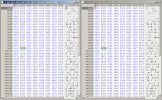The race for the best alternative RME ADI-2 REMOTE APP - which is also still usable under Windows 7 or Linux - was opened today (2023-10-02) by @MC_RME:
->
For developers the MIDI protocol is available here:
MIDI port could access failed:

 www.audiosciencereview.com
www.audiosciencereview.com
->
For developers the MIDI protocol is available here:
ADI-2 Remote Pre-Release: Step 3 – support for the whole ADI-2 series (Page 1) — ADI-2 & 2/4 Pro series, ADI-2 DAC series — RME User Forum
ADI-2 Remote Pre-Release: Step 3 – support for the whole ADI-2 series (Page 1) — ADI-2 & 2/4 Pro series, ADI-2 DAC series — RME User Forum —
forum.rme-audio.de
MIDI port could access failed:

RME announces app control for RME Adi-2 series
Nice to see you all connected now ;) One note: the MIDI port is Class Compliant, that's why it works without driver on the Mac. Audio also works without driver under Windows, but MIDI port access failed for us. Support for that might be incomplete within Windows 10/11. So for using the remote...
 www.audiosciencereview.com
www.audiosciencereview.com
Last edited:


